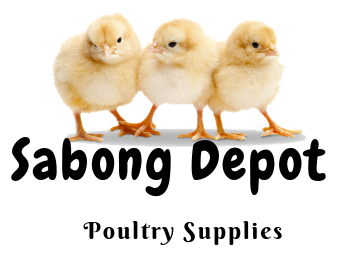By Kris Kampilan
Philippine Gamefowl Conservation Researcher
The history of gamefowl breeding is often shrouded in mystery and misinformation. This is especially true for the Albany gamefowl, a strain that has gained widespread popularity among breeders in recent years. In this paper, we will examine the origins and development of the Albany gamefowl, based on extensive research and analysis of primary sources.

The origins of the Albany gamefowl can be traced back to a main event that took place in Eastern New York, where a breeder named Mr. Hatch had three of his cocks stolen from his shipping coops. Two of the cocks were yellow legged, while the third was a green leg. The two yellow legs were eventually bred, but they produced nothing of significant value. However, the green leg was acquired by a breeder named Army Fox of Utica, New York.
According to E.T. Piper, Army Fox later contacted Mr. Hatch about the stolen green leg cock and was told that it had died, but that there were a few stags that had been produced from it. Army Fox was offered one of these stags and accepted it. The stag that he received was a beautiful, long-feathered, large black and red gamefowl, which he bred with his Slade Roundhead hens. The resulting stags were game but not particularly impressive in terms of appearance or performance.
Around this time, a breeder named Tom Foley of Troy, New York had a strain of exceptionally good ginger-colored gamefowl. Army Fox sent a request to Tom Foley asking for a good cock to breed with his Albany stags. At the same time, an Albany breeder had one of his gingers stolen, a spangle. This spangle was eventually acquired by Army Fox and was bred with his Albany stags. This crossbreeding produced a strain of gamefowl that were exceptional in terms of both appearance and performance. These gamefowl became known as the Albany gamefowl and their popularity grew rapidly among breeders.

It is worth noting that the history of the Albany gamefowl breed is not without controversy and conflicting accounts. Some breeders claim to have letters from Allen in which he claims his strain was kept good by careful inbreeding, while others claim that the best fowls Allen ever showed were crosses of Green’s Japs. Still, others contend that the best Allen ever fought were not bred by Allen at all, but sent to him each year by a New England saloon keeper. These conflicting accounts highlight the complexity and uncertainty that often surrounds the history of gamefowl breeding.
E.T. Piper wrote in 1965,
Every time we read in a game journal or hear someone arguing about how a famous strain was bred, it used to make us smile. Now, after a lot of developing into the history of present-day families of fowl, it makes us laugh right out loud. If any man ever hit the nail on the head, it was Henry Ford when he said, much to the disgust of our scholarly element, “History is the bunk!” Much of the history taught in our schools is just that, or at its best inaccurate reporting of past events, and all game fowl history is absolutely bunk. Ninety-five percent of us gamefowl breeders don’t know how our own fowl are bred further than two or three generations back. A whole hell of a lot of us are not positive how last season’s chicks were bred, and them right on our own yard at that. Sounds silly, but it’s true.
Let’s take the Allen Roundheads as a well-known example. We know they were good. I can show you a man who claims to have letters from Allen in which he claims his strain was kept good by careful inbreeding. I can show you another who says he has letters to prove the best cocks Allen ever showed were crosses of Green’s Japs; and still another who contends the best Allen ever fought, and this over a period of years, were not bred by Allen at all, but sent him each year by a New England saloon keeper. And all three of these men claim to have positive proof of their contentions. What’s the difference how they are or aren’t bred, or who bred them? If they are good today, that’s what you want and need. If they aren’t good, a silly pedigree of long, pure breeding isn’t going to improve them a particle. Recently, we talked to a well-known cocker and a competent man. We asked him about some fowl he had tried out for three years. He said, “I had to get rid of every drop of the blood.All the damned things would do is stand there like fence posts and take whatever the other cock handed them.” Now, we happen to know a considerable amount of those fowl and their owner. He can write out the pedigree of any chicken on his yard and trace it right back to 1865 or ’70, not another drop of outside blood in all those years. They are famous today among paper fighters. Yet, compared with today’s best cocks, they are positively jokes. Keeping pedigrees of animals and birds was begun simply because it furnished (for future reference) a record in writing of how outstanding individuals were bred, who their fathers, mothers, grandfathers, grandmothers, and the proper place for their pedigrees is in the trash can.
In two different issues of the Warrior sometime last summer, we gave you the history of the Albany fowl: one of today’s winning strains of fowl. We had been much interested in these fowl for the past 9 or 10 years, or longer, ever since we saw some of them back in 1930 or ’31. Since then, at every opportunity, we have tried to get a line on how they were originated and bred, up to today. Finally, we thought we had it right and gave in to you. On a recent trip to Troy, we found out it was only approximately correct, so, here it is again. If you are tired of reading our stuff on these fowl, we don’t blame you a bit, and promise this is our last word on the Albanies. Back years ago, or more, Mr. hatch of Long Island, N.Y., fought a main in Eastern New York. When we arrived home, he found someone had stolen three cocks from his shipping coops, the ones he had taken along for the main. Two of them were yellow legged and one a green leg.
While the men who have us our information said they would take their oaths they didn’t know who stole these cocks, they did know who eventually got them. The two yellow legs were bred and produced nothing worthwhile. “Army” Fox of Utica, N.Y. got the green leg. He was a large, straight comb, broad backed, dark red, with green legs. Army later talked with Mr. Hatch about having the cock, and he told him what he was, that all that family were straight combs, etc. Army said he would send and get him. His friend told him the cock had died, and that he wasn’t his type of chicken anyway. However, he had raised two or three stags form him, and a hen that was in breeding, Pogmore Whitehackle and Henny, and offered to send Army one of the stags. When he arrived, he was a beautiful, long feathered, large stag, black and red in color. He was bred to the Slade Roundhead hens and a dozen or so stags were produced. About half of them looked like Hennies, and while game, better than the Hennies, and that’s about all that could be said of them.
About this time and for some years previous, Tom Foley of Troy, N.Y., had a strain of extras good ginger colored fowl, and Army Fox sent to him and asked for a good cock to breed. Just about this time, and Albany crowd one of his Gingers, a spangle (and the only one out of 50 or so to come that color), to fight in the main. He was a big cock and didn’t fall in (but in a hack after the main won a very classy battle) and was sent on to Army Fox for a brood cock. Army bred him to the pullets, or perhaps hens by then, that were sisters to the Henny stags that were out of the Hatch Pogmore Henny cock and Slade hens. This mating, for some unknown reason, produced all very small fowl, 4.0, 4.04, 4.06, etc., too small for practical purposes although they were exceptional fighters and very game. Practically all of them were given away. Shortly after this, Army met a friend of his in Albany, whom we must refer to as Mr. X. He had always had gamefowl, but a few years before had gotten into politics. At that time, he gave up the fowl.
Army suggested he get back in the game again, that new blood was needed among the big shots, and especially new blood with a bankroll. He laughed and said perhaps he would, but where would he get good fowl? To make a long story short, he took the pullets or hens Army had that were bred from the Foley Ginger cock and hens that were ½ Slade Roundhead, ½ hatch-Pogmore Henny. He got, form the Hardy Bros. Of Niagara Falls, one of their Mahogany cocks known as “The Sneak” (due to a habit he had of ducking under his opponent) and bred them together. This mating produced what were known as the strait Albanys; very uniform, awfully game cocks, but not good enough to compete with the topnotchers. From here on, our previous writings on these fowl are correct. A Pine Spangle was bred to the Albany hens and produced cocks that were invincible for five or six years.
When he died, a Claret cock bred to the same hens and other Clarets down to Mr. X’s “Caseys” of today were what he had. Offshoots of the family have proven awfully good. The Bradford fowl, Laws Clippers, Hard, Cox fowl, Keefer, and many more all contain the blood. Despite the numerous and varied crosses that have been made, these fowl today are surprisingly uniform in looks and in action and winning qualities. We know of nothing better, not few as good.
Source: Albany Gamefowl by E.T. Piper (1965)







1 comentario
Love hearing about the truth on the bloodline! Looking the best blood to see what I can do ! Now I know do to use science to do bloodlines ! Let me know if anybody has the willingness ! Thank you for your story’s and time !